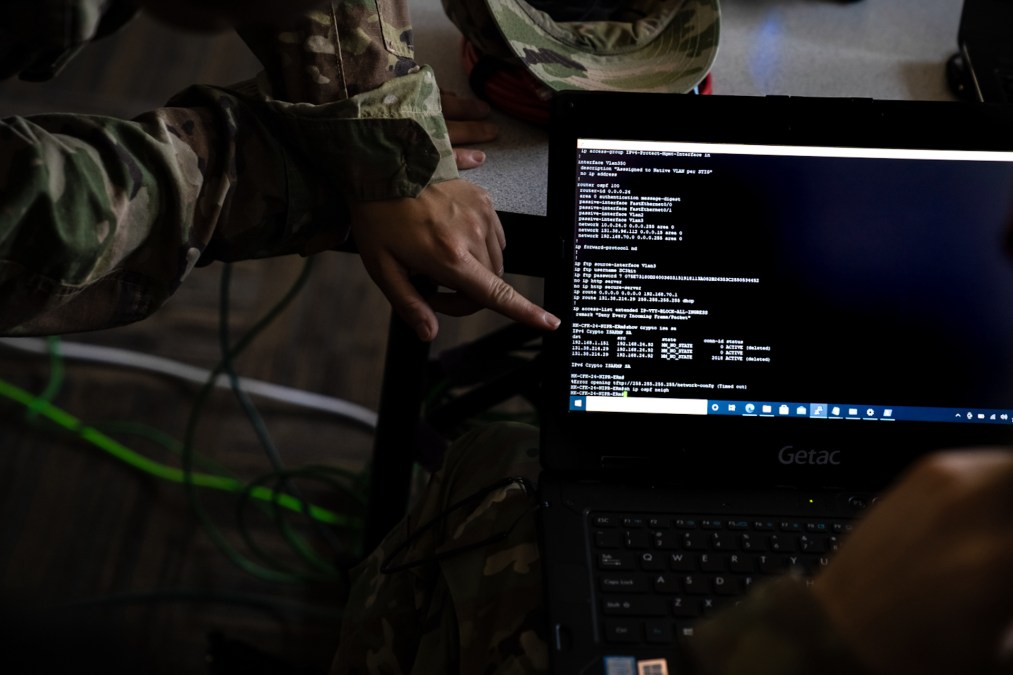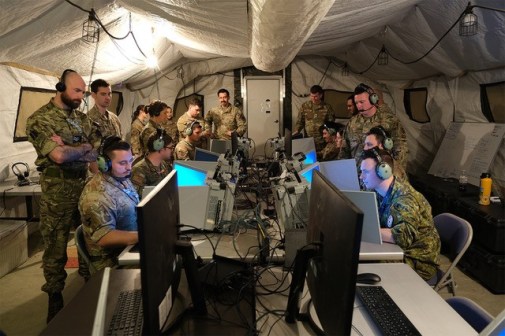Pentagon hopes to ring in new year with minimum viable capability for JADC2

The Department of Defense is gearing up to deliver a minimum viable capability for its warfighting construct known as Combined Joint-All Domain Command and Control (CJADC2), with the aim of having it ready by the end of 2023.
An overarching goal for CJADC2 is to connect the various sensors, shooters and data streams of the U.S. armed forces and their international partners, under a more unified network to enable better and faster decision-making. The Pentagon this year has conducted several Global Information Dominance Experiments (GIDE) hosted by the Chief Digital and AI Office in partnership with the Joint Staff, to get after that. They included participation from all the service branches, key combatant commands and international allies. The latest iteration, known as GIDE 8, kicked off Dec. 4 and is scheduled to wrap up on Friday.
“Building on the success of the previous experiments, GIDE 8 aims to provide a Minimum Viable Capability (MVC) of Combined Joint All Domain Command and Control (CJADC2) to the Joint Force by the end of the year,” the Pentagon said in a press release.
According to Department of Defense Instruction 5000.87 on the operation of the Pentagon’s software acquisition pathway, a minimum viable capability release is the “initial set of features suitable to be fielded to an operational environment that provides value to the warfighter or end user in a rapid timeline.” It is analogous to a minimum marketable product in commercial industry.
The tools coming out of the recent GIDE events are expected to support global integration and joint fires.
“By the end of the year, the experiment aims to successfully iterate on CJADC2 concepts, wargame global crisis scenarios, develop new Tactics, Techniques, and Procedures (TTPs), and influence policy to move the Department’s CJADC2 efforts forward,” per the release.
GIDE 8 isn’t the end of the road for the series of experiments. They are expected to continue next year and expand.
Combined Joint All-Domain Command and Control is a long-term endeavor. This week at the Association of Old Crows annual symposium, Rear Adm. Susan BryerJoyner said the Pentagon is looking at “bridging” solutions in the near term as it pushes ahead with a longer-term modernization effort.
“We need something today to close the gap or to smooth interoperability,” said BryerJoyner, the Joint Staff’s deputy director for command, control, communications and computer/cyber systems, J-6. “A bridging solution is something that’s good enough today but may not be the final solution … And so what we also do is to say, ‘Okay, for the long term, is there a specific vector that we think the bridging solution should kind of aim to bridge towards?’ And when there is, we try and marry the two. Sometimes there’s not, because the solution may still be in development and there’s nothing to bridge to.”






